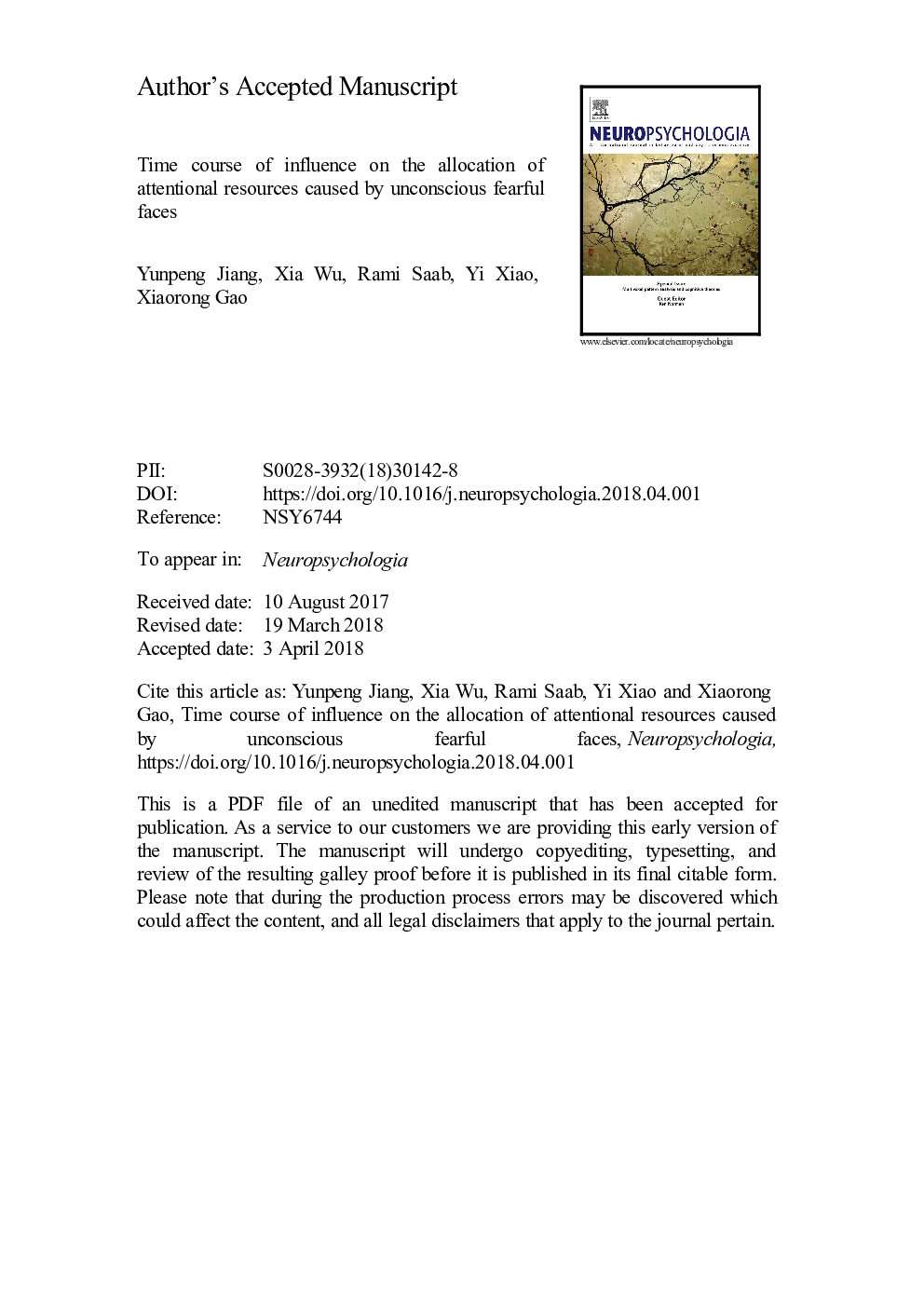| Article ID | Journal | Published Year | Pages | File Type |
|---|---|---|---|---|
| 7317692 | Neuropsychologia | 2018 | 17 Pages |
Abstract
Emotionally affective stimuli have priority in our visual processing even in the absence of conscious processing. However, the influence of unconscious emotional stimuli on our attentional resources remains unclear. Using the continuous flash suppression (CFS) paradigm, we concurrently recorded and analyzed visual event-related potential (ERP) components evoked by the images of suppressed fearful and neutral faces, and the steady-state visual evoked potential (SSVEP) elicited by dynamic Mondrian pictures. Fearful faces, relative to neutral faces, elicited larger late ERP components on parietal electrodes, indicating emotional expression processing without consciousness. More importantly, the presentation of a suppressed fearful face in the CFS resulted in a significantly greater decrease in SSVEP amplitude which started about 1-1.2â¯s after the face images first appeared. This suggests that the time course of the attentional bias occurs at about 1â¯s after the appearance of the fearful face and demonstrates that unconscious fearful faces may influence attentional resource allocation. Moreover, we proposed a new method that could eliminate the interaction of ERPs and SSVEPs when recorded concurrently.
Related Topics
Life Sciences
Neuroscience
Behavioral Neuroscience
Authors
Yunpeng Jiang, Xia Wu, Rami Saab, Yi Xiao, Xiaorong Gao,
